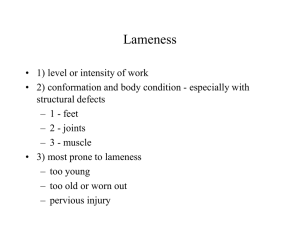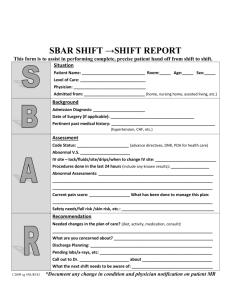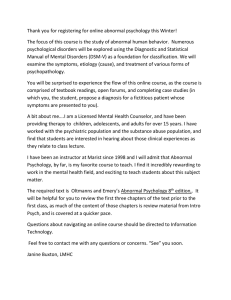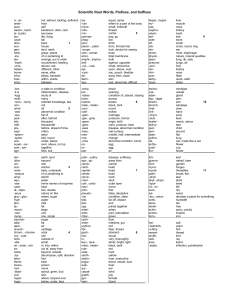Topic 3051: Animal Health Evaluation 1
advertisement
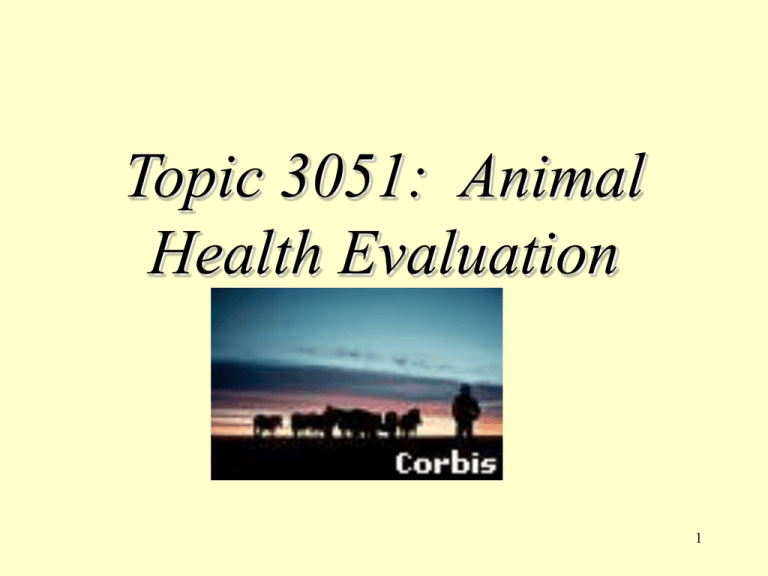
Topic 3051: Animal
Health Evaluation
1
I. The Owner
A. Is the most vital link to continued
and progressive health of their
animals and also can interpret
symptoms of illness and convey
those to a health professional.
2
B. In order to interpret irregular behavior as
an illness or lack of health one must first
understand normal behavior of that animal.
1. Normal behavior is determined by time
spent observing habits of normal & healthy
animal.
2. Once normal behavior is determined,
abnormal is easier to identify by contrast
3. It is important to note that what may be a
normal habit for one animal or group may
be abnormal for another.
3
I. The Owner (cont..)
C. A physical examination involves
using all 5 senses: listening, touching,
seeing, smelling and at times tasting.
1. Inspection at a distance should be done
first, look at animals:
4
a. Sleeping habits- time of day,
standing or lying.
b. Eating habits/nutritional statetime spent eating, time of day
preferring to eat, & meal eaten
throughout day or all at once.
c. Attitude-gregarious, pecking
order,social behavior, and solitude.
5
d. Posture- weight shifting from one foot or
side.
e. Gait- is there indication of lameness
f. Breathing- difficult, fast, or slow.
g. Physical condition- weight loss, hair
coat, skin and odor.
6
D. Next restrain the animal and note
(see also Unit 363):
1. Temperature
2. Heart rate (pulse)
3. Respiratory rate
7
E. Then begin a systematic examination
of all major areas of animal body,
noting amount , color, turbidity, odor,
and consistency of discharges from any
of following body openings:
1. Nose
2. Mouth
3. Eyes
8
4. Ears
5. Uro-genital (excretory, genital)
6. Anus- take samples of feces and
urine if needed.
7. Any wounds, scratches or
abrasions.
9
F. Continue to review external body
surfaces; look for changes in color,
size, and shape indicating
abnormalities. Evaluate the following:
1. Status of hydration- does he look dehydrated;
use the skin pinch test.
2. Color of mucous membranes- which should be
pink, not yellow or white.
3. Capillary refill time- should be quick
(demonstrates this on your arm)
10
4. Mouth/throat- too much saliva may indicate
infection in mouth or inability to swallow. Lack of
saliva may indicate fever or colic, check for
choking, coughing drooling, gagging vomiting,
foul odor, or difficulty swallowing.
5. Ears- no discharge, head should not be tilted (ask
the students what does it {hint: ear infection}
mean if head is tilted?)
6. Ribs- bloat or labored breathing.
7. Legs/feet- lameness, stiffness, straining, or any
leg favored.
8. Genitals- swelling or rash.
11
9. Hair coat/skin- parasites or abnormal roughness.
10. Swelling/lumps/wounds- wound discharge or
ulceration's.
11. Position of animal- is it down, unable to rise or
uncoordinated.
12. Temperature- does it have a fever; dry muzzle,
loss of appetite, thirst, constipation, or indigestion.
13. Milk production- is it normal for animal.
14. Possibility of animal being in pain- are there
tender spots, of things animal avoids doing that are
abnormal?
12
G. After through review, symptoms and clinical signs will
serve to narrow and determine source of problem. An
important symptom of any animal is PAIN and it should
always be a major concern when evaluating an animal’s
overall health.
1. Pain can be indicated by an animal in many ways,
including:
a. Irritability
b. Avoidance of certain activities
c. Atypical fear
d. Demeanor- (not alert, hunched up, etc.)
e. Loss of appetite
13
